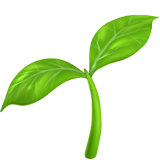On writing for guidance
Prelude
Julia Cameron is the best-selling author of fifty-eight books, including The Artist’s Way, which kicked off a creative movement upon its 1992 release and has been a big influence on The Creative Indepndent. Commonly referred to as “The Godmother” or “High Priestess” of creativity, her tools are based in practice, not theory, and she considers herself “the floor sample of her own toolkit.” The Artist’s Way has been translated into more than forty languages and sold over five million copies to date. Her newest book, The Artist’s Way Toolkit, was released in January. In addition to writing books on creativity as a spiritual practice, Cameron is a fiction writer, poet, songwriter, filmmaker, and playwright. She lives in New Mexico.
Conversation
On writing for guidance
Creativity guru Julia Cameron on writing one book at a time (58 times in a row), creativity as an antidote to codependency, and learning to listen to the voice inside.
As told to Hurley Winkler, 1537 words.
Tags: Writing, Culture, Publishing, Art, Process, Inspiration, Success.
Your new book, The Artist’s Way Toolkit, is your fifty-eighth book. When you first started writing, did you ever have an intention to write so many books?
No. Never. I still don’t. It’s one book at a time.
Do you ever have ideas for the next book while you’re working on the current one?
I want to say no. It goes a book at a time. When I finish a book, then I say, “Oh. I wonder what to write next.”
How much time usually passes between books? Do you ever find yourself closing one and then starting right again on another, or do you have these periods between books?
Right now, I’m in a period between books, but ordinarily, I go pretty much book to book. I would say it takes me the better part of the year per book.
I’m 76. I’ve been writing full-time since I was 18.
Do you think that’s why you work in so many mediums, then?
Yes. I think I find myself getting an itch to write something which may not be in the same genre as what I have just finished writing.
I think part of what makes The Artist’s Way so attractive to people is the very clear and seemingly simple actions you prescribe: the morning pages and artist dates. How did you arrive at the system of daily actions that have become The Artist’s Way?
I would say through practice. I found myself just leading from one book to the next and from one tool to the next. I think they were exciting to me.
What excited you about this framework initially?
The fact that I could keep going.
I notice, when I talk with friends about the practice of writing morning pages, people love to talk about the size of the notebook. Have folks come to you with a lot of questions about that too?
Yes. The often-asked question is, “What size paper should I use?” And I say, “8 1/2 x 11.” If you use something smaller, you miniaturize your thoughts. If you use something larger, you’ll be daunted.
Did you have trial and error with the size of the notebook as you were thinking about how to synthesize this toolkit into what it is today?
I just used the paper that I had on hand, which happens to be 8 1/2 x 11.
I want to talk about the spirituality of The Artist’s Way. It’s a creative program, but it’s also a spiritual program, and I’ve known more artists than I can count who say they’ve picked up the book but almost immediately dropped it because they found that foundation of a higher power to be off-putting. I’ve noticed that many people say the same thing about 12-step programs. But you even address this issue in the book’s introduction, and I think you handle it so well: you say it can simply be an exercise in open mindedness. And yet many readers still find the higher power element to be off-putting. What do you say to those readers?
I don’t have anything to say to those readers.
Why is that?
Well, I just think if they find it off-putting, that is their business.
I think that feeds into something I’ve noticed in your new book, The Artist’s Way Toolkit: you have so much to say about protecting ourselves from the dangers of codependency by utilizing morning pages, artist dates, solo walks, and writing for guidance. Can you say more about that?
I think that the tools lead the way to autonomy. When you write morning pages, you’re saying particularly, “This is what I like. This is what I don’t like.” And it’s particular to the person who is writing. I think when you write out of that state, you are opening yourself up to a spiritual source. That, too, is an exercise in autonomy.
And the same would be true of walking. Walking opens you to a higher source and gives you a sense of benevolence. And guidance is something that we need to try in order to feel that it’s worthy. All four tools are exercises In independence.
Have you written for guidance today at all?
Yes, I did.
Would you be willing to tell me a little bit about what you asked for?
I said, “Dear God, please guide me. Give me faith and optimism. Give me everything I need to make me alert and make me lively. Give me grace and eloquence, give me humor, and let me like Hurley.”
[laughs] I really hope that God is giving you that last one. Do you find yourself repeating questions when you write for guidance?
Yes.
What are some things you repeat?
I ask, “What’s next?” And then I listen. I often find that what’s next is something very simple. And so sometimes I think, “Are you listening to me?”
Does it seem like it can take a while sometimes to be delivered the answers?
I think the answers come pretty quickly. But my belief in them comes more slowly.
In your writing, I love how you express how very gentle the voice of guidance is with you. Do you find that that’s consistent? Or has guidance ever been a little more firm than that?
I think guidance is habitually gentle. And habitually also firm. And so if you are asking for guidance and saying, “Please guide me,” then you are open to the way guidance comes to you. And I think the guidance is, frequently, I want to say, surprising.
In the same way that guidance is habitually gentle, how do you remain habitually open to it?
Well, I use guidance often. And when I do, I am asking to hear what path to take next. And I have found over time that the path, and the suggestion, is fruitful.
And so I think that what we’re doing is asking for openness. And when we are granted openness, we are given a desire to go forward.
You’re the creator of The Artist’s Way, but you’ve also written and directed films in addition to writing plays and musicals and fiction and children’s books and collections of poetry. But you clearly relish both sides of your work. In fact, in your book Living the Artist’s Way, you write, “I love it when I am a building block in someone’s dream.”
It doesn’t seem to bother you that the rest of your tremendous body of work may often be overlooked in favor of one book. Do you have advice for artists who help fellow artists and perhaps struggle to find that balance between pursuing their own work and helping others with theirs?
It’s important to pursue your own work first. When you pursue your own work, you are given what to teach. And I think that it’s an important facet of my work, that I keep moving in many different genres. I think that it’s important for anyone trying to help to teach from creative practice, not from theory.
What does your own writing practice look like these days?
I tend to write several times a day. First thing in the morning, I write morning pages. They sort of give me a trajectory for my day. And then later in the day, I turned my hand to whatever creative project I’m working on, and I write on that for a while. And then I wrap my day up with writing for guidance.
Has your writing routine changed at all through the years, or have you maintained this process of waking up, writing morning pages, working on the creative project later in the day, and writing for guidance to end the day?
It’s pretty steadfast.
How many of your ideas for your books arrive to you during your morning pages?
I think they arise more when I am setting out on them as a creative project. I don’t think that they come to me through morning pages very often.
What other parts of the day do you find yourself being struck with ideas for your work?
I think walking helps.
How long do each of your writing sessions typically last for you?
Morning pages can take quite a little while. And by that I mean, maybe an hour and a half. And when I’m working on a project, I go until I run out of gas.
How do you know when you’ve run out of gas?
When it becomes difficult to find what comes next.
Do you ever feel that you’re wrestling your writing to the ground, trying to get it right? Or do you have a strong sense of when to step away and let your subconscious do its work on it?
I hope to say I have the wisdom to walk away.
How do you know when to walk away from the writing?
I say it takes practice.
Five artist dates Julia Cameron recommends:
Go to a pet store.
Stroll through a botanical garden.
Visit a metaphysical card shop.
Attend an art opening.
Walk in the woods.
- Name
- Julia Cameron
- Vocation
- creativity guru, writer, poet, songwriter, filmmaker, playwright
Some Things
Pagination



